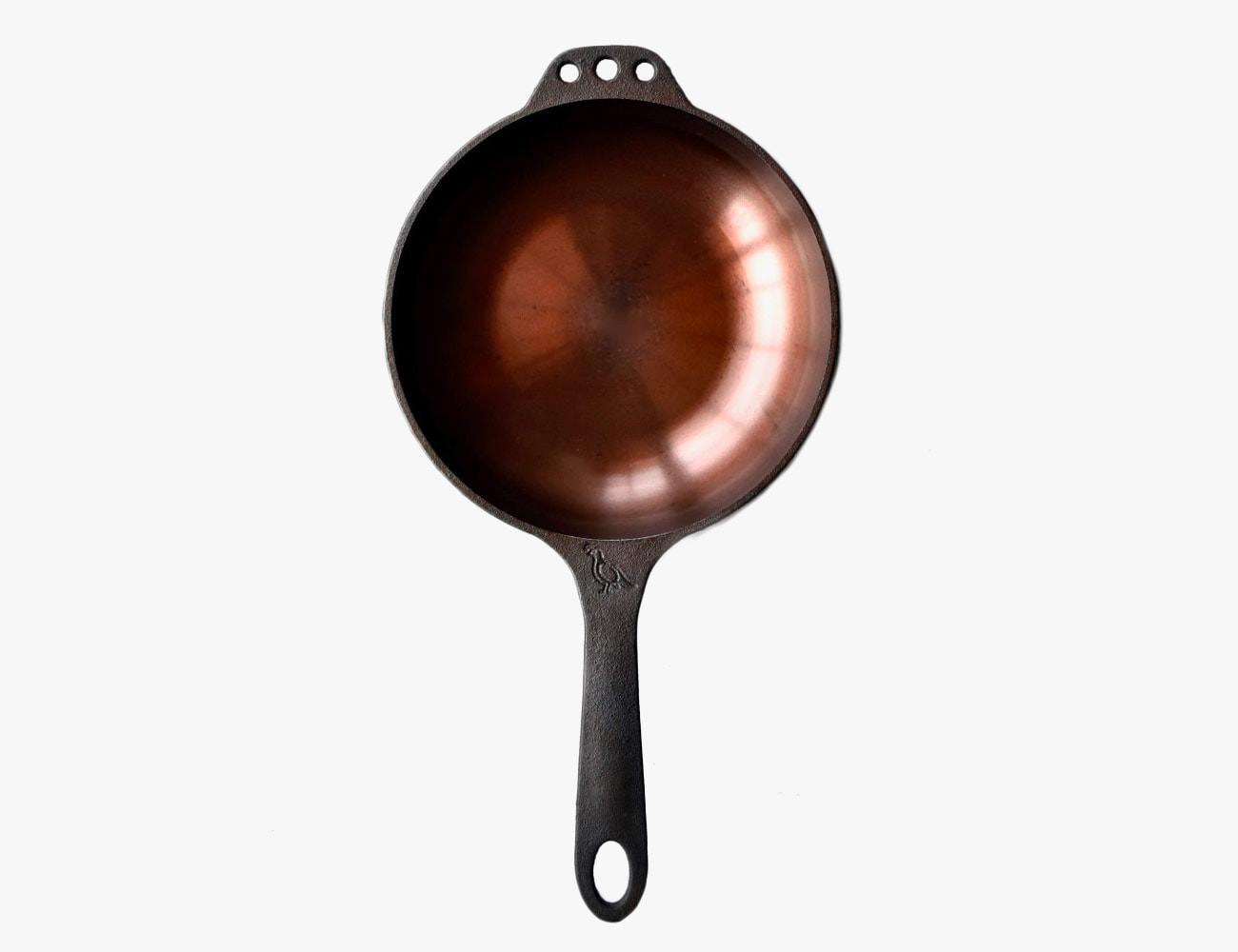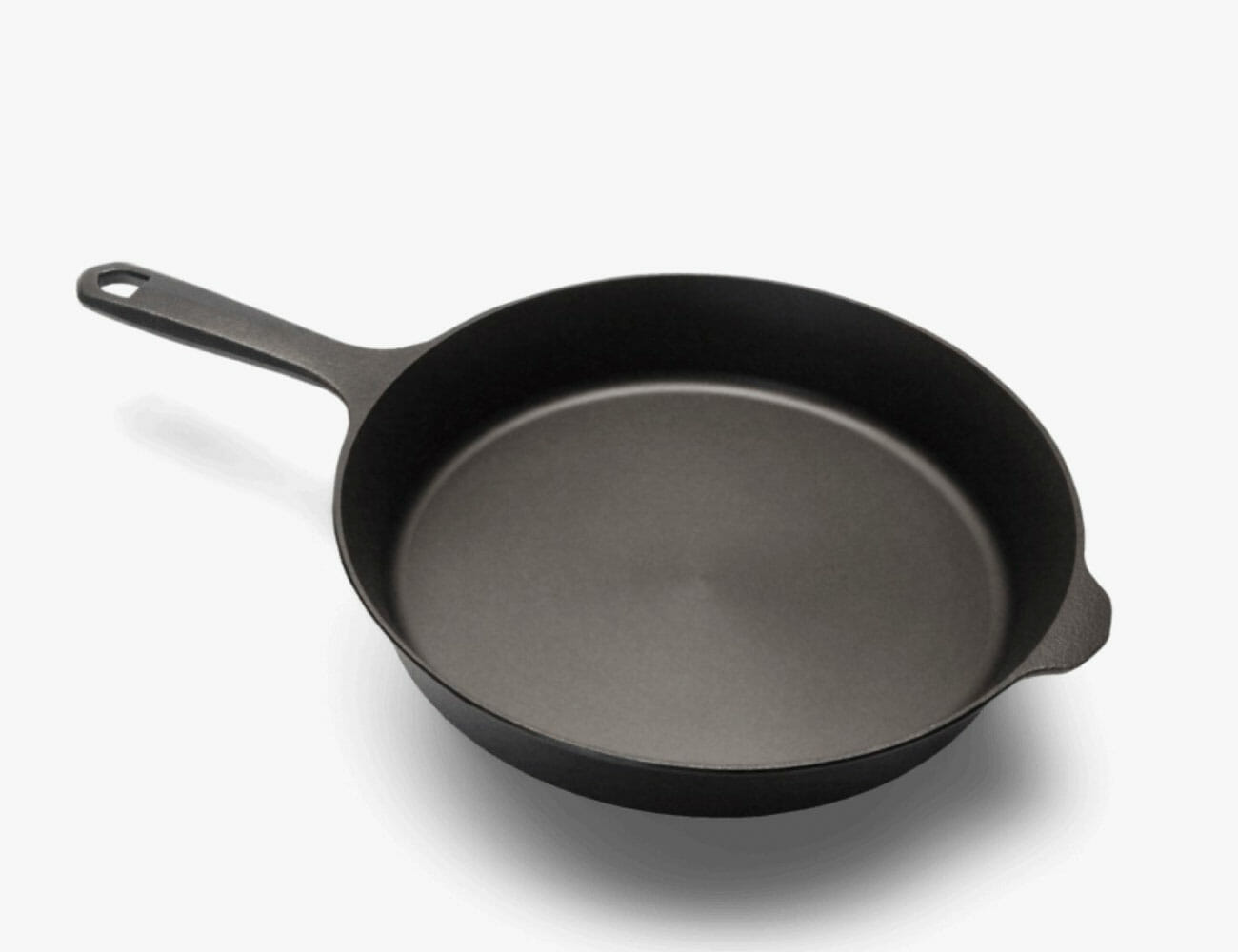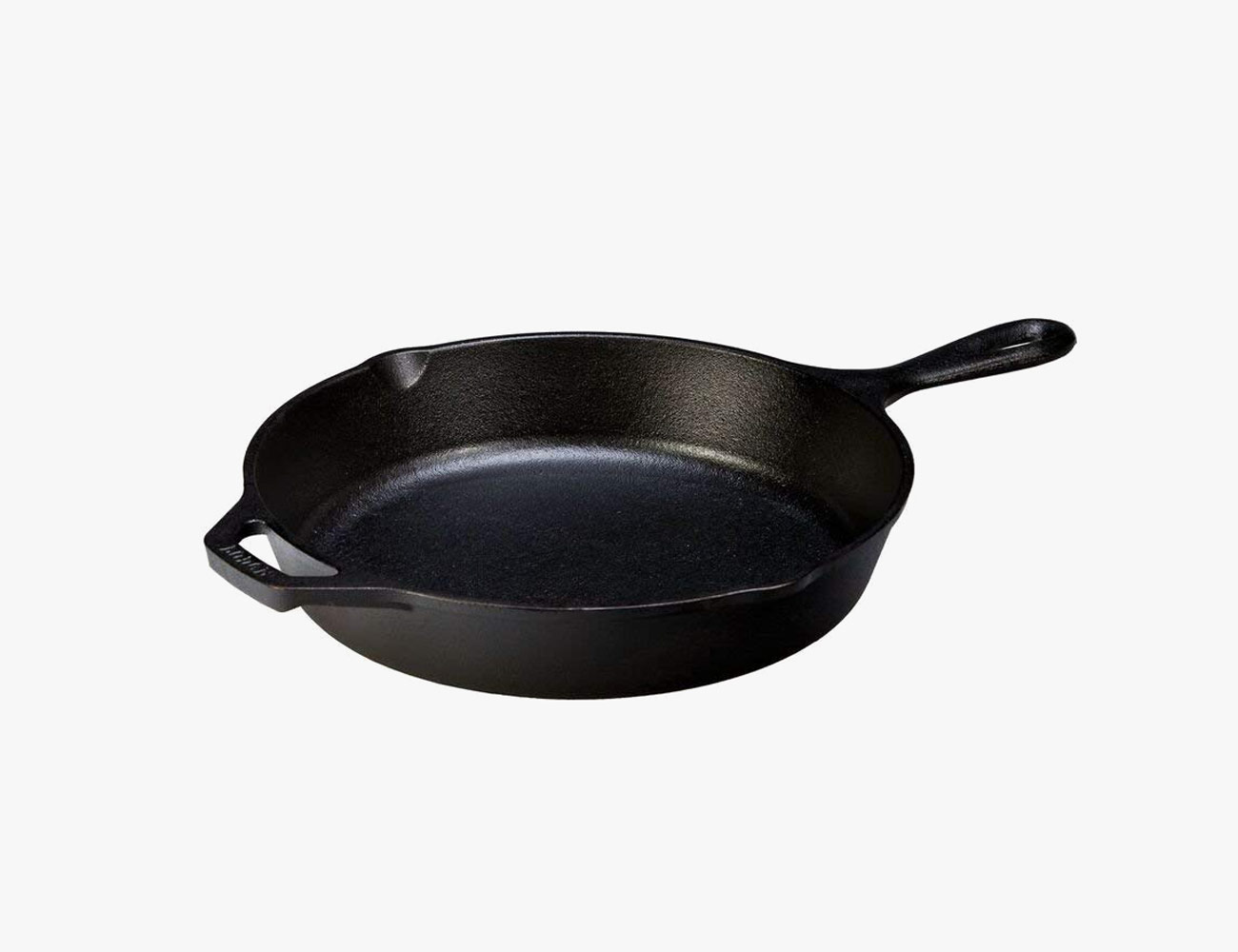If you’re scratching your head over which skillet size is right for you, fret not — this is the easiest decision to make when it comes to cast-iron cookware. After all, there are only three sizes you should even consider: the 8-, 10- and 12-inch skillet. Here’s how to pick between the three.
8 Inches
Our Pick: Smithey No. 8 Cast-Iron Chef’s Skillet ($100)
Feeds: 1 person
Eight-inch skillets are large enough to sear two normal sized chicken thighs, one eight-ounce steak or fry three or four eggs at a time. Go any smaller and you start to lose utility. Because of their smaller stature, eight-inch skillets shine with foods that require tossing — think green beans or fingerling potatoes. But make no mistake, this is a bachelor’s skillet, and optional at that.
10 Inches
Our Pick: Field Company 10-Inch Cast-Iron Skillet ($125)
Feeds: 1 to 2 people
The first size pan any would-be cast-iron skillet maker develops is a 10-inch. The classic size is perfect for one extra-large ribeye, a couple of filets, several chicken thighs or two big chicken breasts. It’s also the closest skillet size to the standard pie tin, so you wouldn’t have to do much recipe conversion work if you were to use it for baking. This skillet is perfect for cooking most meals for two people, or full sides for larger groups.
12 Inches
Our Pick: Lodge 12-Inch Cast-Iron Skillet ($30)
Feeds: 2 to 4 people
Go any bigger than 12 inches of pan and you’ve got a cooking surface with hot and cold spots. This size can pull off two large steaks, whole chicken sears and even most pork tenderloins. The largest downside is the weight — they’re too heavy to toss food in and some might strain to lift them one-handed. But it’s the ultimate skillet to just leave on the stove until you’re ready to use it again.




